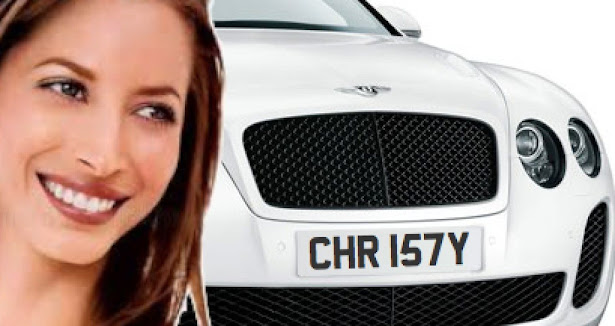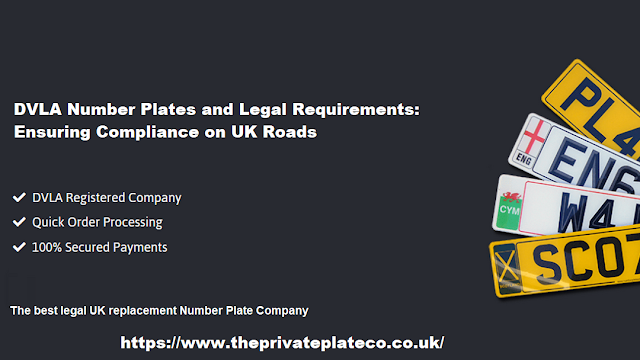Personalized license plates for your vehicle
Personalization plates, or vanity plates, are specialized vehicle registration plates that allow individuals to customize their vehicles with unique alphanumeric combinations. The format of these plates differs from the standard format of regular government license plates.
Personalized license plates allow vehicle owners to display a message that is personal to them, such as their name, initials, a specific word, or a combination of letters and numbers. A vehicle's appearance can be enhanced with these customizations, which add a sense of individuality and expression.
As a result, private plates are typically made of durable materials, such as metal or acrylic, ensuring their longevity and visibility on the road. As a result, a variety of fonts, colors, and design options are available to suit the preferences of a wide range of individuals.
Private plates are usually obtained separately from regular vehicle registration. Personalized plates are issued and managed by specific agencies or departments in many jurisdictions. To ensure that the customizations remain within legal boundaries and do not promote offensive or inappropriate content, these agencies often have guidelines and restrictions.
Depending on local regulations and availability, private plates can be obtained for a wide variety of vehicles, including automobiles, motorcycles, trucks, and trailers. A logo is often regarded as a form of personal expression and can be used to demonstrate individuality, hobbies, affiliations, or even business branding.
Besides their aesthetic appeal and personalization, private plates may also provide additional benefits. A vehicle nameplate can help you identify and remember a vehicle in crowded parking lots or on busy streets, and it can also serve as a conversation starter or establish a sense of belonging within the community.
Vehicle owners can use private plates to personalize their vehicles and make a statement about their individuality, interests, or personal brand. This provides a unique touch to the vehicle and allows the owner to showcase their personality while adhering to the legal requirements and guidelines of the issuing authority.
The Driver and Vehicle Licensing Agency (DVLA) issues DVLA number plates for vehicles registered in the United Kingdom. DVLA plates and UK number plates are other names for these plates. Drivers and vehicles in the UK are recorded in a database maintained by the DVLA, a government agency.
Number plates issued by the DVLA follow a specific format and display a combination of alphanumeric characters that are unique to each registered vehicle. Two letters represent the region where the vehicle was registered, followed by two numbers indicating the year of registration, and finally, a combination of three letters randomly assigned to the vehicle.
On DVLA plates, the region identifier indicates the office where the vehicle was registered. "AB" might refer to vehicles registered in London, while "CD" might refer to vehicles registered in Birmingham. A regional identifier assists in identifying the vehicle's origin.
An DVLA number plate consists of three random letters that serve as a unique identifier for each vehicle. There is no particular meaning behind these letters, but they are assigned in a seemingly random manner in order to ensure that each vehicle is unique.
Law enforcement and automated systems can easily read DVLA number plates as they are typically made of reflective material. The DVLA also sets specific guidelines for the size and design of the plates in order to ensure consistency and legibility.
Number plates are issued, regulated, and managed by the DVLA in the United Kingdom. Through the DVLA's online services or by visiting their local DVLA office, vehicle owners can apply for new number plates or transfer existing plates between vehicles. To prevent offensive or inappropriate messages from appearing on number plates, the agency has established specific rules and regulations.
The Driver and Vehicle Licensing Agency in the UK issues DVLA number plates as the official vehicle registration plates. It follows a specific format consisting of identifiers for the region, year indicators, and random letters. As a means of identification, law enforcement, and record keeping, these plates serve as unique identifiers for every registered vehicle.
A personalized number plate, also known as a custom number plate or a private plate, is a vehicle registration plate that can be customized according to the vehicle owner's preferences and choices. Individuals may display personalised number plates instead of standard number plates issued by government agencies, which may contain personal symbols, words, or combinations of both.
Vehicle owners can add a personal touch to their vehicles by customizing their number plates with a wide range of customization options. Depending on the owner's interests, hobbies, or profession, these plates may feature a variety of combinations, such as initials, names, memorable dates, slogans, or special words.
Regulations and guidelines set by the governing authorities can affect the design and format of personalised number plates. There may be specific rules regarding the placement, font, color, and size of the characters on the plate in some countries or regions, while others permit a greater degree of flexibility.
Registration of a vehicle with personalised number plates is usually conducted separately from that of a regular vehicle. A vehicle owner may apply for a personalised plate through a specific agency or department responsible for issuing and managing them. Customizations are often subject to guidelines and restrictions to ensure that they meet legal requirements and do not promote offensive or inappropriate material.
For longevity and visibility on the road, personalised number plates are typically made from durable materials, such as metal or acrylic. For compliance with road traffic laws, they are designed to meet the same standards of reflectivity and legibility as standard number plates.
There are a number of reasons why individuals choose to purchase personalised number plates. Many individuals perceive them as a means of self-expression, allowing them to show off their individuality and personality through their vehicles. Personalised plates can also be used for marketing purposes, advertising a brand, or creating a unique identity for your vehicle.
Furthermore, personalised number plates can also hold potential investment value in addition to their aesthetic appeal and personalization. Collectors and enthusiasts may be attracted to certain combinations or words that are considered rare or highly sought after.
Personalised number plates provide vehicle owners with a unique and customized way to express their individuality or promote their personal brand. Despite adhering to legal requirements and guidelines set by the authorities issuing the license, they allow for a personal touch on the vehicle's appearance.
A cherished number plate, sometimes referred to as a dateless number plate, is an automobile registration plate that has a significant historical or sentimental value. There is no direct link between cherished number plates and a specific year or region of registration, as opposed to standard number plates that have a specific format informing the year and region of registration.
A treasured number plate is usually older and has been in circulation for many years. It is common for them to contain unique combinations of letters and numbers that do not fall under any specific formatting guidelines. The plates can be personalized with initials, names, or words that are meaningful to the owner or represent his or her interests or preferences.
The scarcity and desirability of cherished number plates make them particularly valuable to collectors and enthusiasts. The market for cherished number plates is highly competitive due to the fact that many of them are considered unique or rare. There are some treasured plates that feature letter and number combinations that have historical significance, such as famous names, initials, or memorable dates.
In most cases, the process of acquiring a cherished number plate entails purchasing it from its previous owner or from an auction house or dealer that specializes in registration plates. Documentation and fees may be required to be paid to the relevant authorities responsible for vehicle registration during the transfer process.
The use of treasured number plates is often seen as a means of personalization and individuality, allowing owners to customize their vehicles in a distinctive manner. As well as serving as a status symbol, they may also serve as a means of expressing personal taste and style.
The value of cherished number plates extends beyond their aesthetic appeal and potential investment potential. Due to the rarity and desirability of certain combinations, their value may increase over time. Therefore, some collectors and investors view number plates as assets that may generate a profit in the future.
The regulations and guidelines regarding cherished number plates may vary from jurisdiction to jurisdiction. There may be specific rules and restrictions in place by authorities in order to ensure that the plates meet legal requirements and do not promote offensive or inappropriate content.
It is clear that cherished number plates provide vehicle owners with a unique and special way of personalizing their vehicles and highlighting their individuality. They are considered collectible items with potential investment potential due to their historical or sentimental value. Number plates provide a distinctive and cherished addition to the appearance of a vehicle, whether they are purchased for personal enjoyment or as an investment.



Comments
Post a Comment